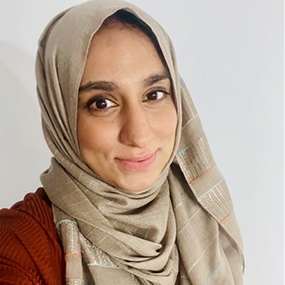
As a British woman of South Asian descent, I wanted to contribute to a meaningful and impactful initiative that would benefit under-represented communities like mine. We are overlooked as a minority or just included to tick a box. Therefore, only a small number of participants from Black African, Asian and Caribbean heritage communities are included and often don’t represent all individuals from under-represented groups.
We don’t want to be isolated or not heard. Rather, we want research and healthcare to be available and applicable to our communities too. That’s why I am involved as a public contributor with the National Institute for Health and Care Research (NIHR), contributing to make a change and make our voices heard.
My personal experience is that I have not been given opportunities to be involved in research. But why is this the case? Currently people of Black African, Asian and Caribbean backgrounds are massively under-represented in research. So how can research be valid and applicable to these communities? Will this change and, if so, how? Here are some ideas:
- have open and honest conversations about the challenges and opportunities.
- listen and take action when feedback is received.
- establish partnerships which are based on mutual respect.
- be an ally.
Introducing the NIHR Race Equality Framework
The Race Equality Framework is a self-assessment tool designed to help organisations improve racial equity in health and care research. It is unique, as it has been formulated through meaningful consultations with individuals from Black African, Asian and Caribbean heritage communities. Individuals expressed their thoughts and views about how they feel about being involved with research. There was a sense and feeling of mistrust. As one community member said, ‘Historically, we have been subjects of research, yet have never benefitted – done to, not with’. These words come from a place of pain through exploitation, human-rights violations, and trauma. Individuals have suffered, and the very institutions that should have cared, supported, and protected these individuals were the ones to inflict pain and suffering. Individuals wanted to see authenticity and a real sense of alliance through a strong partnership to make a real change. Through the Race Equality Framework, the NIHR has been able to maintain rapport with these individuals and focus on making these voices heard.
What are the benefits of the Race Equality Framework?
The Race Equality Framework has many strengths. There are five domains to work through:
- individual responsibility
- leadership
- public partnerships
- recruitment
- systems and processes.
Each domain includes self-assessment questions that help organisations and individuals to evaluate their racial biases and competency. It is thought-provoking and makes you delve into the thoughts held by you and your organisation. It hopes to achieve racial competency and openness to improve current work practices. The Race Equality Framework was formulated for a real and lifelong change, not just for the short-term. The advantage of using the Framework is that there is no timescale and no deadline. You can work through it at your own pace and maybe even incorporate some of the questions into team meetings and events. Another advantage is that it is authentic. Its development is grounded in lived experiences, and it was co-developed with the very communities it intends to support. Furthermore, it can be applied widely to other protected characteristics covered by the Equality Act 2010, including disability, gender, sexuality, and religion. Lastly, and most importantly, it will help organisations to grow their confidence to build trust and partnership with diverse communities.
How could anaesthetists use the Framework?
The Race Equality Framework can support anaesthetists in their recruitment processes to involve under-represented communities in research, and this will, furthermore, build rapport and ensure that all participants are valued and respected. Together with other public contributors, I often join Fay Scott (the co-lead developer of the Framework) in introductory meetings, conferences and public speaking events. We all share a passion and motivation to help individuals and organisations to drive change so that we are no longer under-represented.
Furthermore, we facilitate Action Learning Sets, which enable organisations to delve into their situations and share their issues in a safe space. We then hold a second meeting to discuss whether changes have been made and if previous objectives have been met. This immensely benefits organisations that have adopted the Framework as it gives them a direction where and when needed. There are also share-and-learn events for all organisations using the Framework.
As healthcare professionals you can benefit from adoption of the Race Equality Framework through making your policies and working practices uniform for all, no matter what background individuals are from.
The Race Equality Framework is transformational and changes lives. We can all begin here to ensure better health and care outcomes for all.
Would you like to read more articles from this Bulletin?


